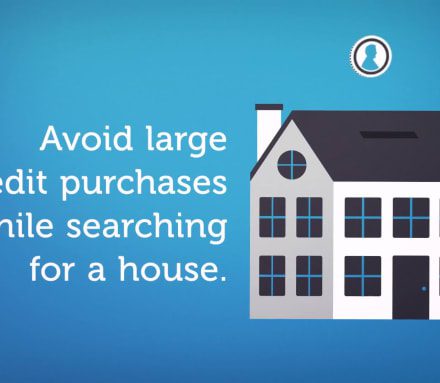Investing in multifamily real estate is an excellent way of creating a steady cash flow. If you carry out your due diligence, you have the potential to earn more income and increase your net worth.
Multifamily real estate is usually used to refer to any kind of residential rental property, but there is a difference between multifamily and other residential investments. Furthermore, multifamily is different from other forms of commercial real estate.
If you partner with the right lender, you will receive all the support you require during the process. Before starting the process, you need to be aware of all the financing options for multifamily property investors. Doing this lets you pick the type of loan best suited to your requirements.
Types of Loans Available
Getting the right loan to use for the acquisition, rehabilitation, or construction of a multifamily asset is not easy. You need to consider some factors such as the terms of the loan—amortization schedule, interest-only, and so much more— fees charged, interest rates, recourse, leverage, prepayment option, subordinate financing, lockout period, carve-outs, and much more.
Multifamily lenders will have their basic requirements and standard structures, which have limited flexibility concerning their ideal borrowers.
Banks or local mortgage brokers will approve your financing if you fit into their niche. Such a situation only contributes to hurting the industry. Multifamily homes offer technology upgrades, smooth access to commercial financing, and some professional advice.
There are different types of loans offered to multifamily property investors, including the following:
Fannie Mae and Freddie Mac Loans
They are also known as “Agency Loans” because they operate under a congressional charter. They take up a significant part of the total multifamily property mortgages that have been disbursed to date, making these loans worth a deeper look at. Fannie and Freddie loans have a high leverage level, about 75% to 80%, and a low-interest rate.
Investors can use these loans to buy or refinance multifamily properties. Fannie Mae and Freddie Mac loans offer various loan terms, including pricing stimulus for properties that meet “green” standards or have an affordable housing component.
Both Agencies offer terms that range from 5 to 12 years, fixed-rate, interest-only, hybrid rates, or ARMs. Fannie Mae also offers terms of up to 30 years. Both agencies have “small loan” programs that have terms and pricing suitable for investors of multifamily properties with units under 50 or less than $7.5 million.
You need to work with an approved lender to get a Fannie Mae or Freddie Mac loan because the Agency doesn’t directly offer the loans to borrowers.
FHA Loans
These loans are also referred to as “FHA-insured financing” since they are government-insured loans. They are attractive to investors because they have the longest terms, the lowest fixed rate, and a leverage level that is the highest in the industry—up from 85% to 90%.
They take a lot of time to approve, approximately six to twelve months. It is also a complex affair, understanding and wading through all the FHA demands and guidelines, including filing forms, which contributes to the lengthy process.
Working with a lender familiar with the complexities of the FHA approval process can make the process much faster and smoother, especially with a prepared and motivated borrower.
FHA-insured loans are usually non-recourse, which means the loan is only secured by the property itself, which is a benefit on the part of the borrower. Their terms range from 30 to 35 years.
Apart from purchase and refinancing, FHA-insured loans can also be offered to multifamily property investors for ground-up construction and substantial renovations. The construction of permanent loans is becoming a hot FHA product since banks have tightened their construction financing requirements.
Like the two previously named loan types—Fannie Mae and Freddie Mac—borrowers will still be required to go through an approved lender to access FHA-insured loans.
CMBS Loans
They are also known as conduit loans. They are commercial mortgage loans that are secured by commercial property. The property and its profits all act as collateral for the loan. These loans can b used for multifamily property, mixed-use, industrial, retail, storage, office, and hospitality.
Bridge Loans
These short-term loans are used to bridge a gap while the investor waits for a permanent loan. They come in handy when acquiring a property. Bridge loans have higher interest rates and have a shorter repayment period from 18 months to two years, with an option to extend for one or two years.
Alternative Financing Options
Apart from the traditionally known loan facilities, there are other financing options to choose when you want to finance your multifamily property. They vary between debt funds, hard money lenders and online marketplaces.
Debt funds are capital pools backed by private equity that typically finances commercial real estate undertakings. Purchasers normally use them to fund complex developments, as bridge loans (also known as lease-up financing) and for specific property restoration projects.
Online marketplaces are also coming up as a financing alternative. They accumulate capital from different investors and provide equity and debt financing to real estate investors. Most of them are designed as networking platforms; therefore, borrowers are encouraged to conduct their own exhaustive due diligence in advance.
Hard money lenders, on the other hand, are private lenders who give short-term loans. Their interest rates are typically higher, so they should be the last resort for any borrower. A solid strategy to repay the loan within a short period should be in place.
Long-Term and Short-Term Loans
These options are both available to finance commercial multifamily real estate. The best approach for a specific borrower is hinged on the purpose of borrowing and the nature of the real estate transaction.
The ideal commercial loans for property acquisition, repositioning or new construction are short-term. Their period ranges between six and twelve months, the year being the most common duration. Your typical lenders for this will be hard money lenders, traditional banks or debt funds.
On the other hand, borrowers use long-term loans to finance commercial real estate transactions. Even short-term loan users, at some point, use long-term loans on their multifamily property after it stabilizes. Under normal circumstances, long-term loans have a duration of five to twenty years, but the loan will amortize over 30 years.
Most sources of capital discussed earlier offer long-term commercial loans; life companies, traditional banks, online marketplaces, debt funds, and CMBS lenders are all in the business. Hard money lenders do not offer long-term loans due to their high-interest rates.
Other Variables to Consider
Pro Forma and Underwriting
Fundamentally, there is no difference between these terms; they are often used interchangeably. The only clear distinction is that underwriting ideally refers to the pro forma creation process.
The pro forma itself is a financial statement projecting the performance of the deal as envisioned in the agreement. It contains a summary of income and expenditure expectations that prospective investors can use to calculate and forecast their return on investment.
Before extending credit to borrowers, lenders usually carry out their own comprehensive underwriting of the deal.
Market Rate and Affordable Rent
There is a difference between “market rate” rent and “affordable” rent. As the name suggests, market rate rent is usually based on what the prevailing market can support. Units priced below the market rate are usually easier to lease than the ones offered at the market rate or above it.
Rents for affordable apartments are normally lower than the prevailing market mean. The housing industry classifies affordable housing into “capital ‘A’ affordable” and “lowercase ‘a’ affordable.” Capital ‘A’ Affordable units are regulated by the government and must adhere to certain conditions. Rent-regulated apartments are a good illustration of “Affordable” housing.
In the case of “lowercase ‘a’ affordable,” the rent isn’t regulated by any public institution. Instead, the owners willingly decide to price their units sub-market rate, or sometimes they do that unknowingly. A unit can also be “affordable” because of its design. This normally applies to units that are small in design, making the tenant expect affordable rent.
Bottom Line
Multifamily housing is becoming a popular investment strategy for many investors. Financing the acquisition of a multifamily property can be challenging, especially for first-time multifamily investors. Luckily, the number of financing options available to multifamily investors has increased.
You can get in touch with a multifamily debt broker who will help you identify the best options for lenders. They have knowledge and experience that you may not have. They may charge some fees, but it will be worth it when you get to make your investment.




